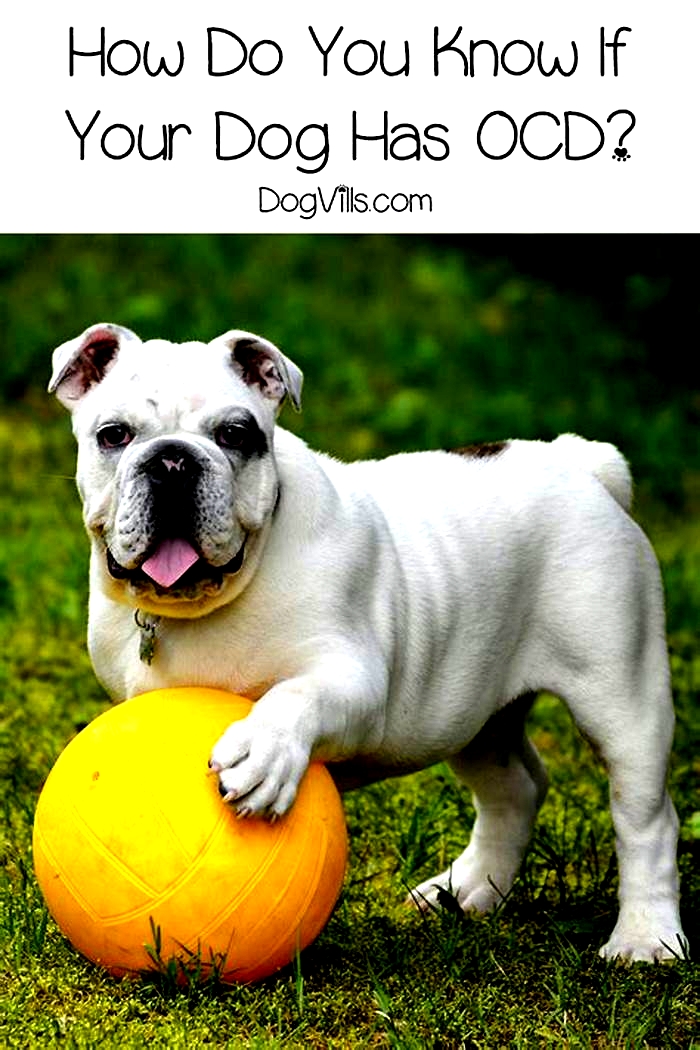Can dogs have ADHD

Can Dogs Suffer From ADHD?
Source: Victor Trovo Afonso photo/Creative Commons License
The more information that scientists uncover about the behavior of dogs, the clearer it is becoming that there is a lot of similarity between the behavior of young human children and canines. While the focus of most of the research has been on mental abilities shared by children and dogs, we are now learning that certain behavioral problems are also shared by young humans and canines. One of these possible behavior problems is attention deficit hyperactivity disorder (ADHD).
ADHD is a behavioral condition that has been extensively studied in humans, and in children, in particular. The symptoms in children typically involve hyperactivity, distractibility, an inability to pay attention for sustained periods, impulsiveness, poorly adjusted social behavior, and sometimes snappish or aggressive responses, although it is not necessary for any one individual to have all of these symptoms at the same time. ADHD greatly reduces the individual's ability to learn, particularly in educational settings, and to live in harmony with others.
The recent consensus among researchers is that dogs, especially those who appear to be consistently out of control, might be suffering from ADHD. This is supported by the fact that dogs have the same chemical markers as human sufferers do, such as low blood phospholipid levels. In dogs, the flock of symptoms can also include fearfulness and noise sensitivity, which added to the impulsiveness and hyperactivity can be a nightmare for their owners. Some of the predisposition toward ADHD seems to be genetic in nature, since the data shows that certain breeds, such as German shepherds, are more likely to have the problem. One dog trainer that I know laughingly claims that as far as he is concerned, all terriers are born with a predisposition to ADHD.
A new piece of research published in the journal Veterinary Medicine Open Journal has also recently shown that certain aspects of the dogs' experience and environment can lead to increased symptoms which look like ADHD. The research team was headed by Nikolai Hoppe at the Institute for Biology and Environmental Sciences at the Carl von Ossietzky University of Oldenburg in Germany. It involved an extensive set of questionnaires that were given to dog owners. The survey questionnaires looked at the personality of the dogs, as well as social factors and living conditions.
The research report contains quite a number of analyses, and I can only touch on the highlights here. Not surprisingly, when it comes to personality measures, the dogs that are most likely to show ADHD symptoms are those which are rated as being less calm overall. These dogs are also rated as being less trainable and less sociable.
Of more interest is the fact that certain environmental and social conditions affect the appearance of ADHD symptoms. Dogs that have lots of social contacts with other dogs and many interactions with people seem to show fewer symptoms of ADHD. The more that you physically connect with and play with the dog, the fewer the problems. Dogs that are left alone for extended periods of time are also more likely to show hyperactive symptoms on your return. Another interesting association the researchers found is that dogs who sleep alone (isolated from their owner or other dogs) have more problems. Finally, male dogs who have been neutered are more likely to show symptoms of ADHD.
Is there any way to be definitely sure that your dog has ADHD? Remember that some dogs (as my trainer friend pointed out about terriers) are naturally more active, bouncy, and distractible than others. The true test of ADHD is to give your dog a prescribed stimulant under controlled clinical conditions and then monitor changes in heart rate, respiratory rate, and behavior. For a dog with ADHD, a stimulant will reduce the symptoms. Yes, you read that rightthe paradox is that a stimulant can actually calm a dog (or a person) who has ADHD.
To see why a stimulant might help to reduce ADHD symptoms, let us consider the situation where we are dealing with a child suffering from this problem. The child is constantly self-stimulating. They wiggle and twitch, they talk continuously, and seem to do everything except follow directions. When you give a stimulant to such a child they no longer have such an urgent need to self-stimulate, which means that they are then more likely to listen and follow directions rather than engaging in behaviors that involve lots of movement and responses to any sort of distractions in their environment. The same seems to be true for dogs with ADHD. Thus, the application of the stimulant seems to be the best test, and is often also the treatment prescribed by veterinarians to help lessen the problem.
All of this research tends to support the existing belief that human and canine diseases and mental conditions are similar, which suggests that dogs can serve as excellent models for a variety of human problems, or conversely humans can serve as an excellent model for understanding canine mental conditions and illnesses.
Copyright SC Psychological Enterprises Ltd. May not be reprinted or reposted without permission.
Can Dogs Have ADHD? (Symptoms & Signs Of ADHD In Dogs)
Dogs can experience symptoms of a condition that resembles ADHD. A study undertaken in Finland showed that for some dogs, low levels of fatty acids in their blood - could reveal that they have what we humans know as attention deficit hyperactivity disorder or ADHD.
Dogs with suspected ADHD also show some of the same chemical markers as humans with ADHD.

What is ADHD?
Attention deficit hyperactivity disorder (ADHD) is a condition that affects attention and hyperactivity. It also impacts the ability to concentrate, show self-discipline, control impulses and pay attention and leads to behaviour issues and some social awkwardness in certain situations.
The symptoms of ADHD usually improve with age, but many adults who were diagnosed with the condition at a young age continue to experience problems.
Has it been proven that dogs can have ADHD?
According to Stanley Coren, the recent consensus among researchers is that dogs, especially those who appear to be consistently out of control, might be suffering from ADHD.
This is supported by the fact that dogs have the same chemical markers as human sufferers do, such as low blood phospholipid levels.
A study by Veterinary Medicine Open Journal says:
The behavioural disorder, attention deficit hyperactivity disorder (ADHD) is typically associated with human children, but its clinical manifestation in dogs has recently been investigated indicating that certain gene variants (e.g., the DRD4 gene) contribute to its expression.
On balance, it would be accurate to say that dogs can suffer from a condition that is - at least - very similar to ADHD which is more commonly recognised in humans.
What is hyperkinesis and is it the same as ADHD?
Hyperkinesis in dogs is rare. If you have a dog that appears to act in what is commonly called a hyper-active way, the chances are it is NOT hyperkinesis.
However, learning to understand more about this condition can help dog owners identify the signs and in this article, we start out by looking at a case study where drugs were used as a treatment plan for hyperkinesis.

You should always seek veterinary and/or professional dog training advice if you have concerns about your dogs behaviour or any sudden changes in their personality.
Canine Hyperkinesis: A case study of drug treatment
The first controlled studies of hyperkinesis in dogs were an outgrowth of a long-term attempt to develop animal models of psychopathology.
Dogs were chosen for these studies for several reasons, primarily because there were many carefully bred animals available. This allowed an evaluation of genetic strains in certain breeds.
Also, dogs are the only domestic animal with a variety of emotional responses comparable to those seen in people: they worry about things not essential to their survival.
In studies designed to evaluate responses to stress, some dogs did not respond to Pavlovian conditioning. Positive reinforcement, negative reinforcement and tranquillizers were all tried, but nothing worked.
Typically such dogs would be eliminated from the study, but because the researchers were interested in the interaction of genetics and psychological environment, they were curious about dogs that appeared unwilling to be studied.
Eventually, the researcher decided they were dealing with the equivalent of hyperkinetic children. On that basis, amphetamines were given, and the tentative diagnosis proved correct.
The first model of hyperkinesis in a dog was Jackson, a Cocker-Beagle mix whose usual response to any approach was to snap, snarl, growl or, if possible, bite. Many experienced, gentle dog handlers were bitten until eventually laboratory personnel refused to approach the dog.
Jackson responded the same to other dogs. He viciously attacked any dog without hesitation, even friendly and docile animals. He refused to submit to Pavlovian conditioning and destroyed laboratory equipment in his rages.
Because depressants were not effective against Jacksons abnormally hyperactive and vicious behaviour, it was suspected that hyperkinesis may have been involved. On this assumption, the dog was given amphetamine orally.
Within 2 hours, Jacksons personality changed to complete docility. He whimpered as if he wanted to be petted. When petting was stopped, he begged for more.
He became nonviolent, even submissive, toward the same dog he had attacked earlier. Jackson appeared to be perplexed and unsure of what to do.
When placed in the Pavlovian experimental stand after medication, Jackson responded normally and learned rapidly, indicating that his previous failure was not a result of mental retardation, but rather a secondary effect of his behaviour problem.
After 6 weeks of drug-facilitated psychosocial therapy, medication could be withdrawn without the reappearance of aggression, but hyperkinesis reappeared in low-threat situations.
Aggression was apparently trained out by the drug-facilitated social interaction and conditioning experiments, indicating that what is learned under the influence of amphetamines is retained later.
After 2 more months of psycho-social therapy using amphetamines, Jacksons non-medicated hyperkinesis was also reduced.
Because he was between 1 1/2 and 2 years old at the time of the experiments, maturation could have been associated with the cure; however, 6 older hyperkinetic dogs did not outgrow their abnormal behaviour patterns.
An insight into Hyperkinesis in dogs
Hyperkinesis is a disorder characterized by excessive activity, extreme restlessness, impulsivity, and a short attention span. In humans, especially children, it is now referred to as ADD, Attention Deficit Disorder. Veterinarians continue to use the term hyperkinesis.
Hyperkinesis can affect a dogs ability to learn new behaviours. Dogs so afflicted exhibit inattention and restlessness, and are easily distracted. The syndrome seems to be caused by both genetic and environmental factors.

Most owners are not aware of the disease. The condition is quite rare in dogs, and when diagnosed by a veterinarian, medications, usually stimulants, can be prescribed to ameliorate the effects.
Unfortunately, the popular use of the term to describe normal, but overly excited dogs, has clouded the issue for both owners and veterinarians. Dogs with extreme hyperkinesis that cannot have their symptoms improved with drug therapy are often euthanized.
Hyperkinetic dogs exhibit many of the following symptoms
- Cannot be taught anything, even in obedience school
- Salivates constantly
- Always excited or nervous
- Cannot sit still, even for a minute
- Never becomes accustomed to everyday situations
- Chronically rapid heart rate
The symptoms of hyperkinesis are usually exacerbated in dogs that are stressed by being kept in conditions of close confinement or short-leash tethering.
Even with the clear presence of defining symptoms, it is difficult to treat the basic problem because there is often no clear reason, either physical or environmental, to explain the symptoms.
Some truly hyperkinetic dogs do not respond to positive reinforcement, and tranquillizing drugs seem to have no positive effect. Truly hyperkinetic dogs can be vicious and are known to bite owners and other dogs without provocation.
Dont be worried about your dog if she is simply hyperactive. This can be normal for some breeds and is typical with new puppies who display enthusiasm for everything.
Just a simple hello will have them running in circles. Some dogs are simply energetic and enjoy running, jumping, chewing, pulling, and barking. Their enthusiasm is one of the things that endear them to us.

True hyperkinetic dogs seldom have a rest period. They exhibit abnormal frantic behaviour and continue it until they drop from exhaustion.
Because the symptoms are also exhibited in simply overactive dogs, veterinarians will usually require a test trial with stimulants like amphetamines or Ritalin, which is often prescribed for children with ADD.
If your dog is simply overactive, they can be retrained and managed with persistence and obedience training. Vigorous daily exercise will also help the overactive dog to expend energy.
How a dogs blood could reveal if they have ADHD
The study formed part of a larger behavioural research project and was run by Professor Hannes Lohi's research group at the University of Helsinki and the Folkhlsan Research Centre.
The project paid specific attention to the impact and well-being of dogs in connection with some of the most common behavioural problems that dogs suffer from, such as general fearfulness, sensitivity to noise as well as hyperactivity and impulsiveness.
Professor Lohi explains, "Behaviour and behavioural disorders often develop as a combination of hereditary and environmental factors, which makes studying them challenging".

"Metabolomics or the study of the metabolism provides us with new clues on the biological issues underpinning behavioural disorders while promoting genetic research."
He added, "At the moment, metabolomics research in dogs is rare. The purpose of this pilot study was to examine new approaches and attain information on any metabolic abnormalities associated with hyperactivity in dogs."
ADHD reveals similar results in both dogs & human
The project worked with German Shepherds and discovered that the blood metabolites in hyperactive and normally behaved German Shepherds revealed a significant link.
Specifically, those who were hyperactive and impulsive had low levels of fatty acids (lower blood phospholipid levels) in the blood.
Jenni Puurunen, a doctoral student says, We knew to expect this discovery from research on the human side, as several studies have recorded lower blood lipid and fatty acid levels in ADHD patients than in control groups."
She continued, "However, the causal relationship is not clear and requires further studies. Our discovery supports the existing belief that human and canine diseases are similar, which suggests dogs can serve as excellent models for human illnesses."
Could a dogs age impact their behaviour?
According to Jenni, their study revealed that it has little impact.
She says, It is significant that a dogs age, sex, or fasting had little impact on the link between behaviour and metabolites. We also controlled for dietary changes by feeding all dogs the same food for two weeks before testing.
Could intestinal health affect a dogs behaviour?
A piece of important information revealed in the study was the correlation between hyperactivity and tryptophan metabolites.
Tryptophan metabolites are solely produced when intestinal bacteria process the tryptophan from the food.
This information was confirmed by the differences in the bacteria found in the gut of hyperactive versus normally behaved dogs.
This information finds a very significant link between the brain and the intestines in dogs.
A globally unique study of dog behaviour is underway as part of a more detailed canine behaviour project.
Important note about ADHD and dogs
Some people might make the case that all dogs have symptoms that look like ADHD just because a dog displays certain behaviours that are associated with ADHD.
Remember, it might just be a case of a dog being a dog.









